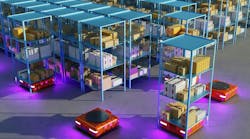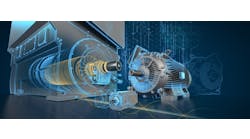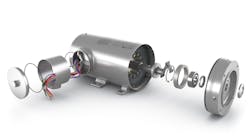Back when I also covered discrete automation, control and machine building, I saw a rerun of the original Terminator movie, and noticed the climatic ending scene was in a real factory that featured several robot arms from Fanuc and Yaskawa Motoman. I was struck by the counterpoint of the genuine machinery and the stripped-down, humanoid robot that spawned its endless franchises of movies, TV shows, etc. I thought the genuine equipment provided conventional points of reference that made the fictional Terminator seem more believable and terrifying to the audience.
I also realized that the iconic, Terminator and all his red-eyed descendants and knockoffs have an equally long line of ancestors from the Tin Man in The Wizard of Oz to the lovable robots in Star Wars and onward. Just like the “animals” in every animated cartoon, they’re simply anthropomorphic characters—just more humans in clever masks, still transferring their psychology onto automatons and other stand-ins, such as the Golem, Frankenstein, the Wolfman and so many others.
In the same way that scary characters and stories get retold until they’re diluted and can’t cure our boredom, real robots mostly in automotive plants gradually became icons cemented in the public mind. This is a problem because icons are static and don’t evolve, which is very appealing to those who dislike change. Unfortunately, if we think of all robots as fixed, bolted-down arms, it becomes hard to consider what else they could do, anticipate what’s coming, or even see what’s emerging in front of us.
This is why we’re so surprised when actual, practical innovations come along—such as adding wheels and propellors to create unmanned arial vehicles (UAV), automated guided vehicles (AGV), automated mobile robots (AMR) and other acronyms. Even with our long history of radio-controlled (RC) model cars, airplanes and boats, most of today’s drones seemed to come out of nowhere—especially for Russian tank crews trying to invade Ukraine in the past couple of years.
I remember we covered Kiva Systems shortly before it was acquired by Amazon more than 10 years ago. Its little, orange mobile, robotic units looked like upside-down recycling containers, but they could pick up shelves, bring them to pick-and-place personnel, and make order-fulfillment operations more efficient. Since then, they and other AGVs and AMRs have multiplied and grown into large, increasingly mobile, slab-like robots that can transport heavy loads in increasingly varied applications.
I believe this memory inspired me to keep an eye peeled for mobile robots in the process industries. So, I was gratified when several exhibitors at a recent ARC Industry Forum highlighted what appeared to be Boston Dynamics’ well-known, four-legged robots. Despite this hopeful news, it took another couple of years for an end-user to confirm they were using these deer-like, quadruped robots, but Yokogawa finally reported in this issue’s “Untethered” cover story that it’s working with Cosmo Oil to test them at its Yokkaichi refinery in central Japan.
If I’d been stuck on the prejudice that robots could only be fixed arms on automotive or discrete manufacturing lines, I might have missed or ignored them when Cosmo and Yokogawa started to see if they could walk up and down stairs, navigate its facility, and likely soon perform inspections and other tasks.
The reporting lesson for me continues to be don’t be held back by common conceptions and static icons, and don’t trust easy, lazy, cynical answers from uninformed sources that haven’t verified what’s actually happening. Just pay attention and be open-minded in the present, remember the past, and form useful connections that will likely make the future more visible and hopeful, too.





